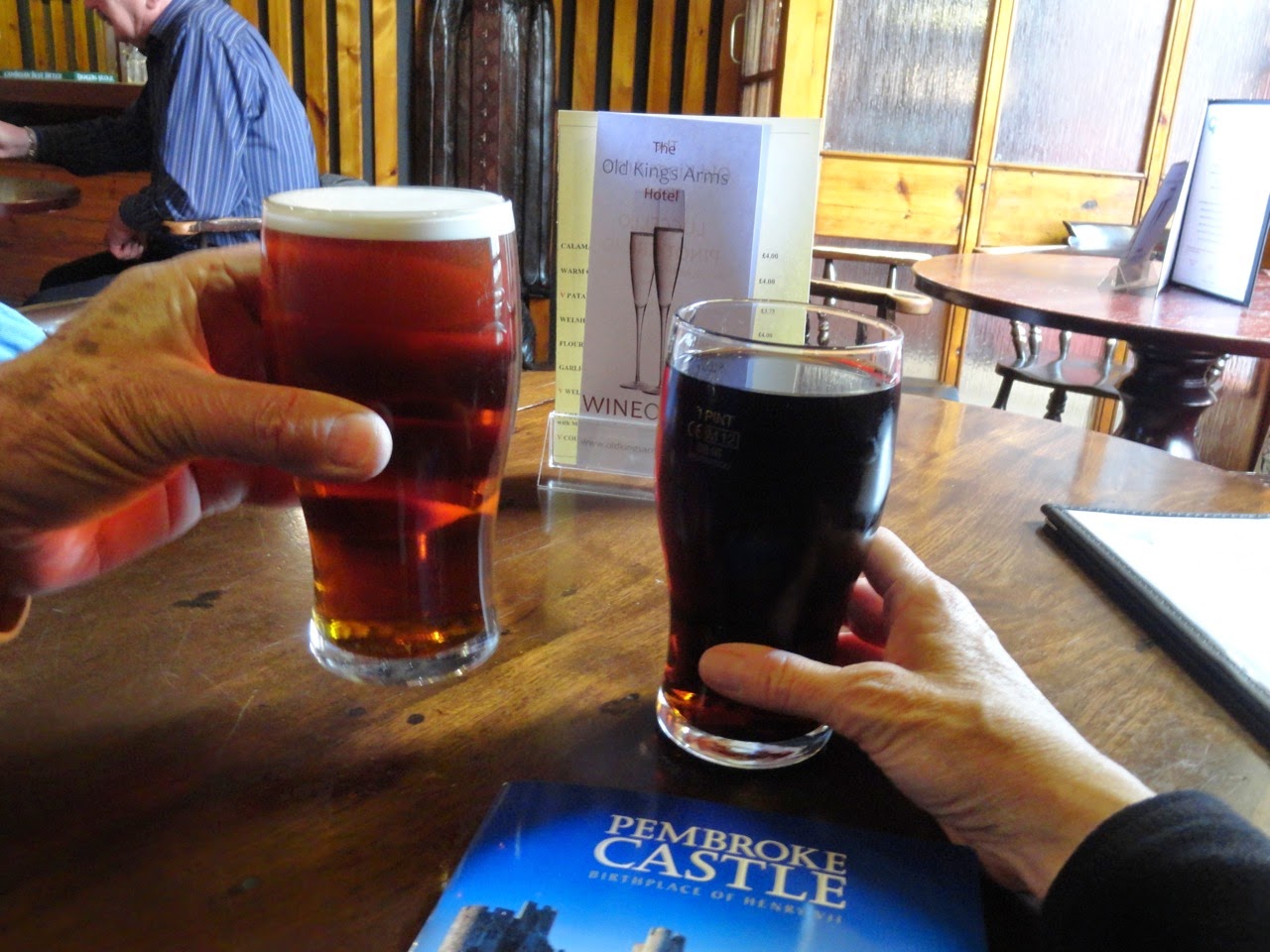April 28 - Druidston Haven is our second Welsh beach collecting area, and from the moment we set out from our hay loft, it was a delightful experience. I challenge anyone to find this beach upon first try, as most of the narrow roads leading to it aren't marked. But we enjoy seeing the local way of life, so the searching becomes an opportunity.
We finally happened upon the Druidstone Inn. The druid stones are long gone, but the Inn is an enchanted forest of its own - funky and quirky, with a beer garden overlooking the shore some 200' below and the whole of Druidston Haven bay. The Inn sells art, has a delightful history, and the following link makes entertaining reading:
Druidstone Inn Hotelier
Above: a wonderland gate opens to the path leading to the Druidston Haven beach; many benches are tucked into the cliffside. In the distance note the Pembrokeshire coastal footpath, 186 miles of cliff paths above the coast largely mapped out by Ronald Lockley, Martin's father, in the 1950's.. Please see yesterday's post to read more of the immense influence of Ronald Lockley in this area.
The stone wall around the Druidstone Inn shelters the beer garden and what was once a rare croquet court, as one of the previous owners was an internationally acclaimed player.
And how many times do you see horses on beaches? The surprises just didn't stop!
 |
| Horses on beach |
 |
| Heading down to Druidstone Haven beach to collect graptolites... |
Heading down to Druidstone Haven beach to collect graptolites, and off to the right what do we see?
Why, of course, an earth house! Which used to be a ramshackle wooden shack that finally expired, and the eccentric owner MP (Member of Parliament - Congressman in our parlance) replaced the mess with a glass earth house. This little paradise had an influential resident. Reminder - we're in the middle of nowhere with farmers driving muddy tractors on an unmarked narrow road that is 7' wide if you're lucky.
 |
| Why, of course, an earth house! |
 |
| Finally, we make it to the beach to find graptolites galore at the foot of the cliff. |
The shingle looks like the above, and in the black shale Silurian-aged single-saw blade graptolites are abundant.
Only upon our return to the hay loft did I realize the diversity of graptolites, and I'm very bummed to have discarded on the beach one likely graptolite that at the time looked faintly like a trilobite. It would be a good idea to do my research before going to the site.
 |
| Some of our collection back at Pen y Holt farm. |







































